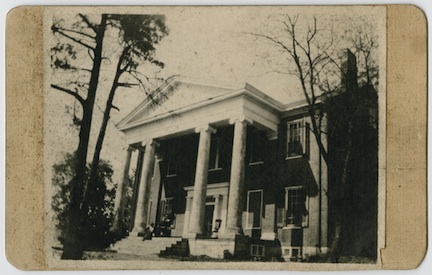Lincoln’s Confederate Little Sister
 The Civil War is often remembered as “brother versus brother,” but for Abraham Lincoln, it was brothers-in-law versus brothers-in-law—and a slew of other in-laws, too.
The Civil War is often remembered as “brother versus brother,” but for Abraham Lincoln, it was brothers-in-law versus brothers-in-law—and a slew of other in-laws, too.
Historian Stuart W. Sanders has published a new book that looks at one of Lincoln’s troubled family connections. “Lincoln’s Confederate ‘Little Sister:’ Emilie Todd Helm” is a long-form essay available on the Kindle and related platforms.
The fifty-page essay examines the life of Emilie Todd Helm, who was Mary Todd Lincoln’s half-sister.

Married to Confederate General Ben Hardin Helm, Emilie spent the early part of the Civil War following the Southern army. After her husband was killed at the Battle of Chickamauga, Emilie went to the White House, where she and Mary mourned their family’s losses. In addition to General Helm’s death, two of their brothers had been killed while fighting for the Confederacy.
Having a Confederate widow in the White House was controversial, and Union politicians condemned Lincoln for the visit. To Lincoln, however, Emilie’s presence was a calming influence upon Mary, who was also mourning the recent death of one of their sons.

“This was a terrible time for the Todd family,” Sanders said. “Because of their divided allegiances, the family was scattered across the country. Therefore, it was impossible for them to mourn together, so the visit was important to both Emilie and Mary Todd Lincoln.”
The visit, however, was not without conflict. In one instance, Emilie argued with Union General Daniel Sickles about the war, something that infuriated the officer. Sickles told the president, “You should not have that rebel in your house.”
“Excuse me, General Sickles,” Lincoln responded, “my wife and I are in the habit of choosing our own guests. We do not need from our friends either advice or assistance in the matter.”
Despite the family’s sadness, there was some levity. Once, Emilie’s daughter argued with Lincoln’s son about who was president, Abraham Lincoln or Jefferson Davis. To diffuse the situation, Lincoln put the children on his lap and said, “Well, Tad, you know who is your President, and I am your little cousin’s Uncle Lincoln.”

Before the war, the Helms and Lincolns had been close. Lincoln had met Emilie when she was a child and called her “Little Sister.” She had visited the Lincolns in Springfield, Illinois, before the war, and Lincoln had offered her husband a commission in the Union army, which he had declined. When General Helm was killed while fighting for the Confederacy, Lincoln wept.
After leaving the White House, Emilie returned to Lexington, where she kept a low profile to avoid entanglements with Union authorities. Eventually, however, she wrote to Lincoln a letter that blamed his Union bullets for their family woes. She and Mary apparently never spoke again.
According to Sanders, their relationship was another casualty of the war. “The Todd family was divided by the conflict,” Sanders said. “About half of Emilie’s siblings supported the Union while the others supported the Confederacy. Their story is emblematic of what Kentucky families experienced during the war, but it’s made all the more compelling because of the family’s national prominence.”
Although wartime divisions fractured the family, after the conflict Emilie maintained a relationship with the Lincolns’ son, Robert. She later lived in Indiana before settling in Elizabethtown, Kentucky, where she was the town’s long-time postmistress. She ended her days at Helm Place, a stately Greek-Revival mansion located outside of Lexington.

After Mary’s death, Emilie became the Todd representative at several events honoring Lincoln, including the dedication of the cornerstone of the Lincoln Birthplace in Hodgenville and the unveiling of the Lincoln statue in Kentucky’s capitol rotunda. “In her postwar years she played a careful balancing act of reconciliation,” Sanders said, “revering her husband’s Confederate legacy while commemorating Lincoln’s memory.”
Emilie died in February 1930 and was buried in the Todd family plot in Lexington. At the time of her death, one obituary writer called her “one of Kentucky’s oldest and most honored women.”
Sanders is the author of three Civil War books, including Perryville Under Fire: The Aftermath of Kentucky’s Largest Civil War Battle; The Battle of Mill Springs, Kentucky; and Maney’s Confederate Brigade at the Battle of Perryville. He is the former executive director of the Perryville Battlefield Preservation Association and is now a public history administrator for the Commonwealth of Kentucky.

Enjoyed the read. Interesting history during a difficult time for my husband’s ancestors. Rebecca Helm
My husband is Mark Helm, the son of John Larue Helm V.